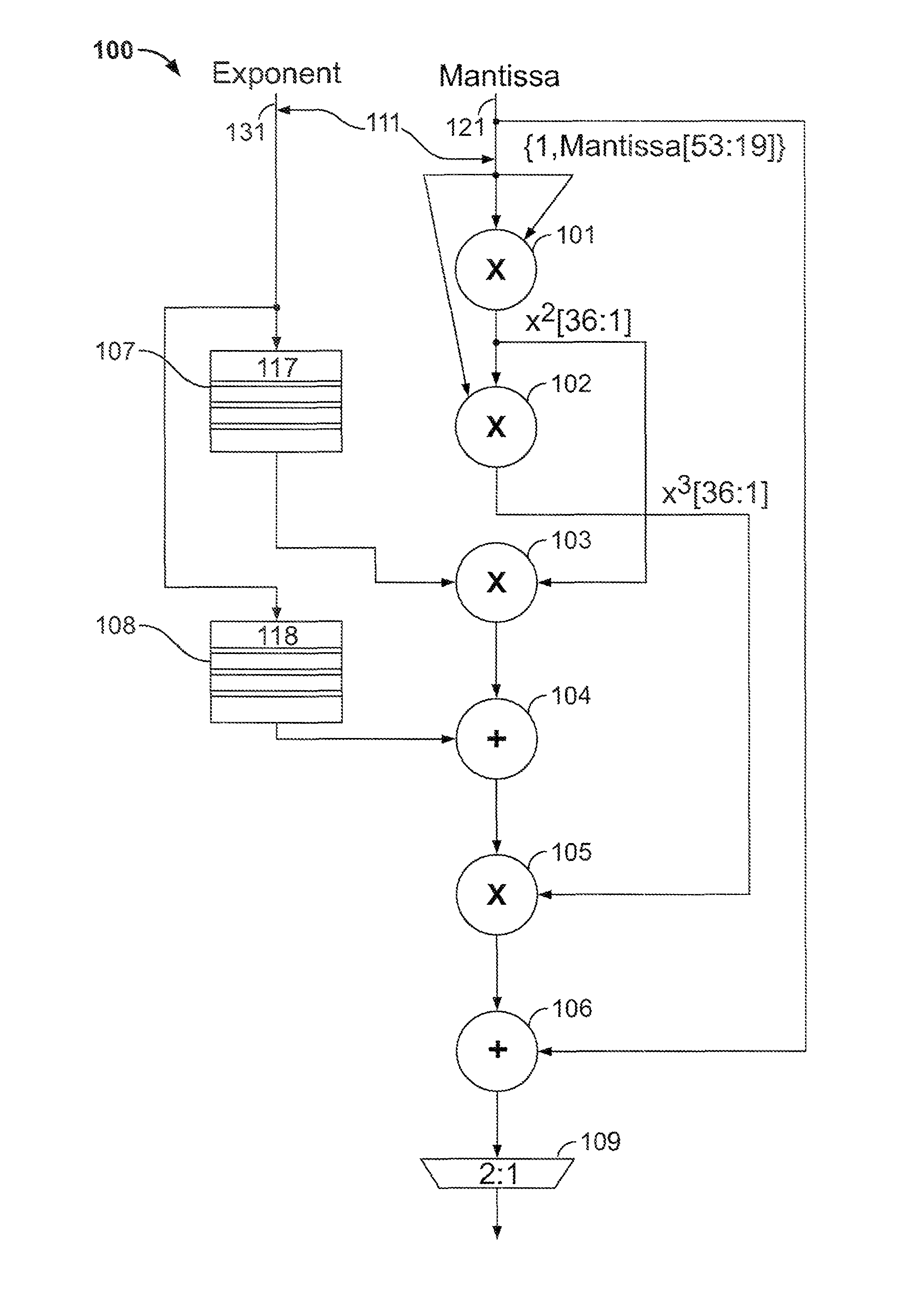Computing floating-point polynomials in an integrated circuit device
- Summary
- Abstract
- Description
- Claims
- Application Information
AI Technical Summary
Benefits of technology
Problems solved by technology
Method used
Image
Examples
Embodiment Construction
[0015]Circuitry according to the invention implements Horner's rule for floating-point polynomial calculations by using the coefficients to perform denormalization and performing the remainder of the calculation as a fixed-point calculation. For any particular implementation of a polynomial calculation, each coefficient may be stored in a table as multiple versions of itself, each shifted a different amount. The exponent of the coefficient term could function as the index to the table, selecting the correct shifted version.
[0016]An embodiment of the invention may be understood by reference to an example of the inverse tangent (tan−1, ATAN or arctan) function. The inverse tangent function can be computed using the following series:
[0017]arctan(x)=x-x33+x55-x77…(3)
Using Horner's rule, this can be expressed as:
[0018]arctan(x)=x+x3(-13+x25-x77…)(4)
[0019]arctan(x)=x+x(0+x(0+x(-13+x(0+x5)…)))(5)
This uses two adders and five multipliers, although if equation (4) is limited to tw...
PUM
 Login to View More
Login to View More Abstract
Description
Claims
Application Information
 Login to View More
Login to View More - R&D
- Intellectual Property
- Life Sciences
- Materials
- Tech Scout
- Unparalleled Data Quality
- Higher Quality Content
- 60% Fewer Hallucinations
Browse by: Latest US Patents, China's latest patents, Technical Efficacy Thesaurus, Application Domain, Technology Topic, Popular Technical Reports.
© 2025 PatSnap. All rights reserved.Legal|Privacy policy|Modern Slavery Act Transparency Statement|Sitemap|About US| Contact US: help@patsnap.com



